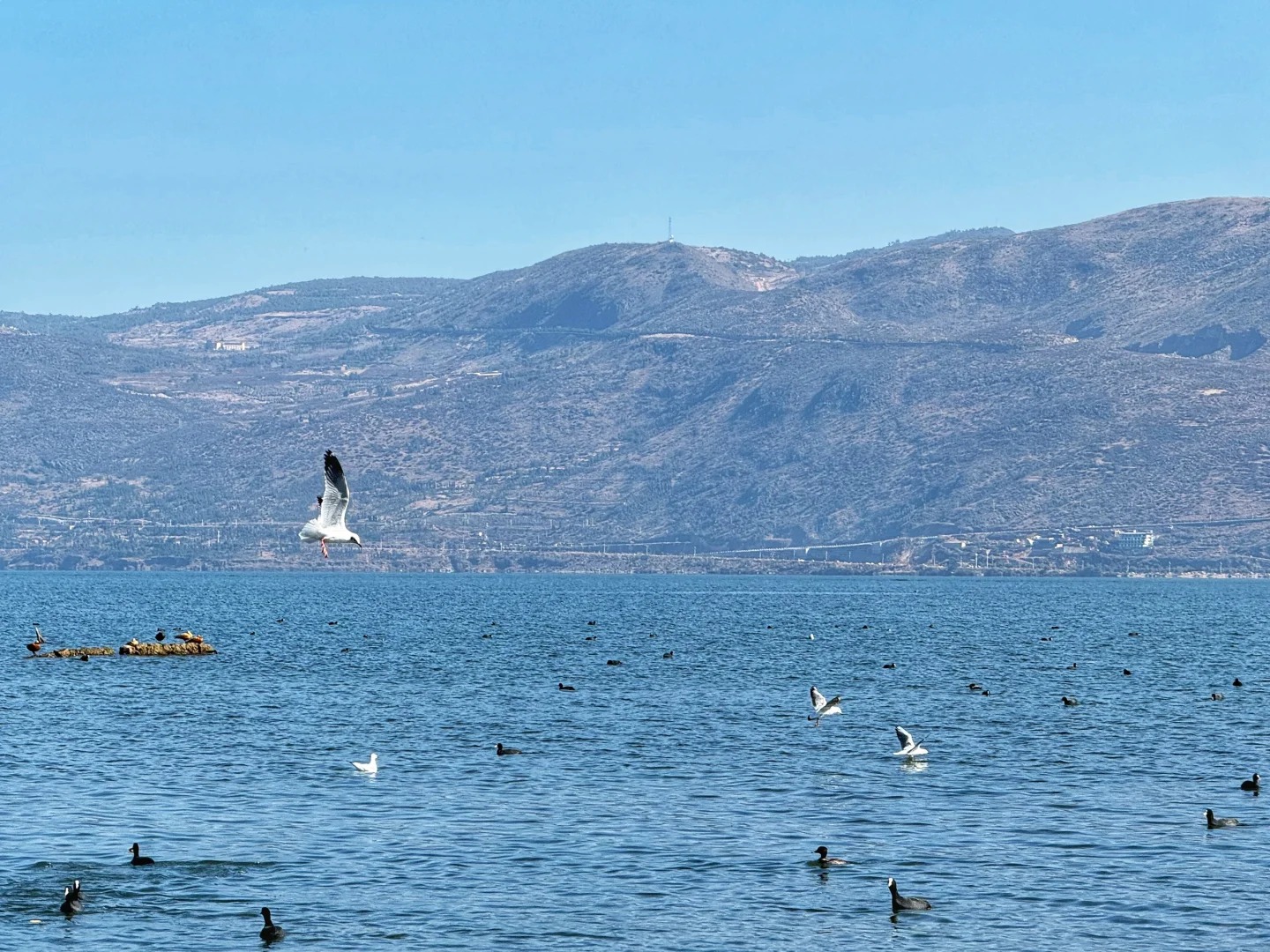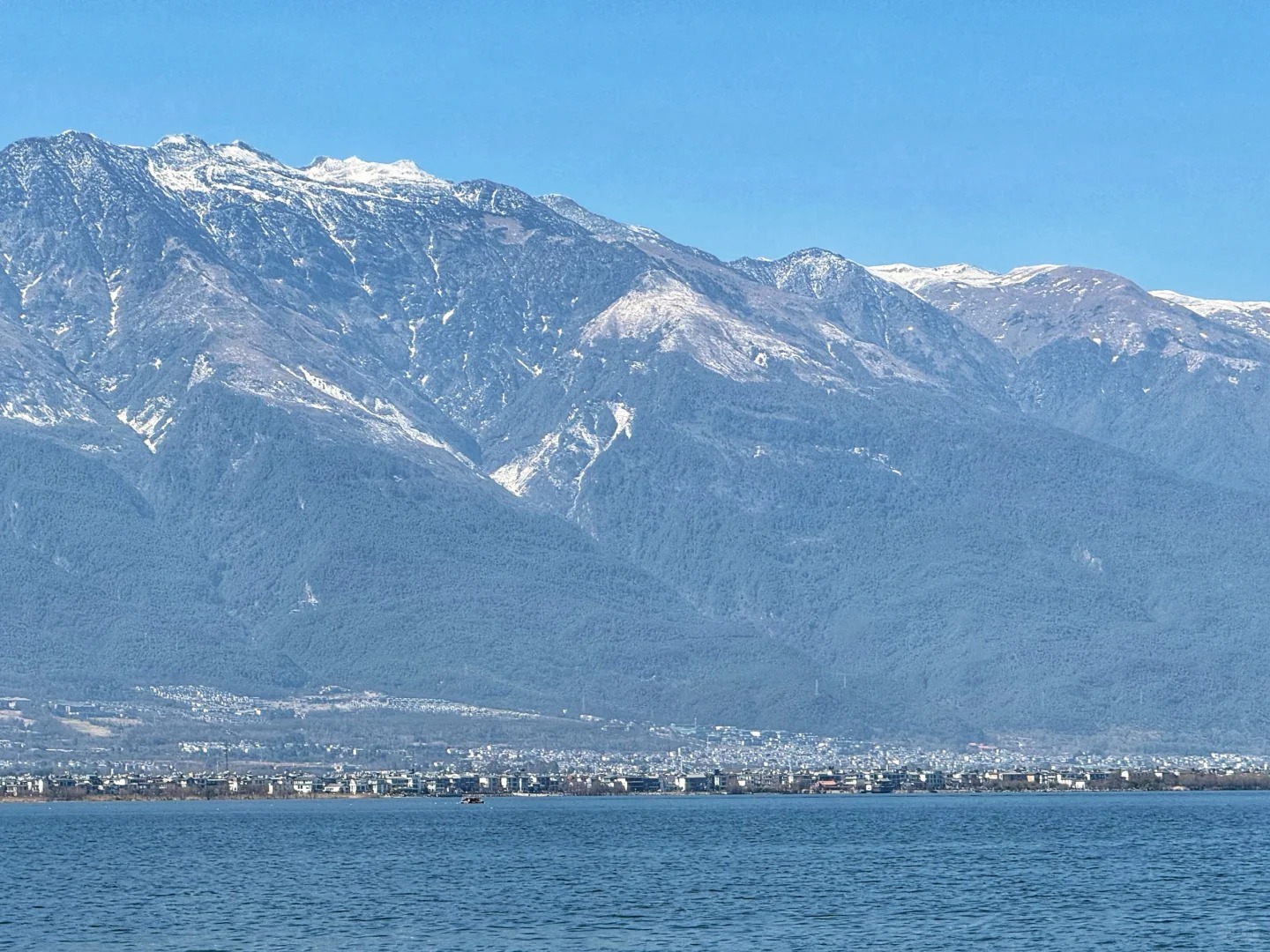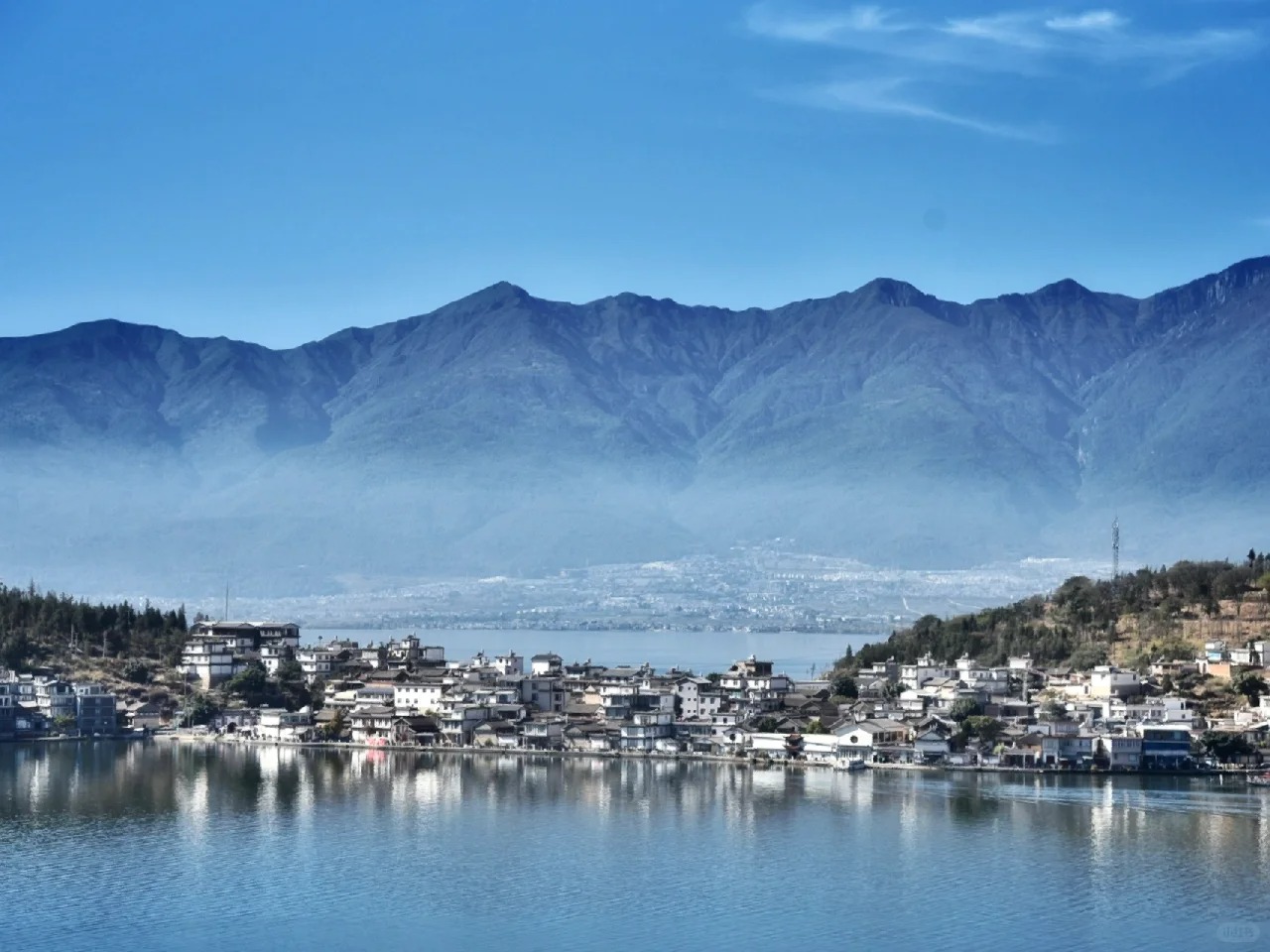Visiting Information
| Information | Details |
|---|---|
| Chinese Name | 洱海 (Ěrhǎi) |
| Location and Address | Dali Bai Autonomous Prefecture, Yunnan Province, China |
| Opening Hours | 24/7 (Some specific attractions around the lake may have limited hours) |
| Entrance Fee | Free to view; Boat tours range from 30 to 200 CNY depending on the route |
| How to Get There | By Bus: Take bus lines 2, 4, 8 from Dali Old Town to Erhai Lake By Taxi: Available from Dali Old Town, about 20-30 minutes ride (No metro system in Dali) |
| Best Time for Visit | March to October, especially June to September for clear weather |
| Contact Info | Dali Tourism Bureau: +86 872 212 2570 |
Overview
Erhai Lake, also known as Er Lake or Lake Er, is a large alpine lake located in Dali Bai Autonomous Prefecture, Yunnan Province, China. It is the second-largest highland lake in Yunnan, covering an area of approximately 250 square kilometers. The lake is shaped like an ear, hence its name “Erhai” which means “ear-shaped sea” in Chinese. Known for its clear waters, beautiful surrounding landscapes, and cultural significance, Erhai Lake is a major tourist attraction and an important ecological resource for the region.
Historical Background
Erhai Lake has a rich history dating back thousands of years. It has been an integral part of the Bai people’s culture and the broader Dali region for centuries. The lake played a crucial role in the development of the ancient Nanzhao Kingdom (738-902 AD) and the subsequent Dali Kingdom (937-1253 AD). It served as a vital water source, transportation route, and defensive barrier. The lake area has witnessed numerous historical events, including battles and cultural exchanges, making it a site of significant historical importance in Yunnan Province.

Architectural Features
- Three Pagodas of Chongsheng Temple: Located near the lake’s western shore, these pagodas are iconic landmarks of Dali. The central pagoda, built during the Tang Dynasty, stands at 69.13 meters high and is one of the tallest pagodas in China. The architectural style reflects the fusion of Han Chinese and Bai ethnic influences.
- Dali Ancient City: While not directly on the lake, this well-preserved ancient city is closely associated with Erhai Lake. Its city walls, gates, and traditional Bai-style houses showcase the area’s unique architectural heritage.
- Traditional Bai Villages: Scattered around the lake are several traditional Bai ethnic villages, such as Xizhou and Zhoucheng. These villages feature distinctive Bai architecture, characterized by white walls, black tile roofs, and intricate wooden carvings.
- Erhai Lake Park: Located on the lake’s eastern shore, this park combines natural landscapes with architectural elements such as pavilions, bridges, and viewing platforms, designed to enhance visitors’ appreciation of the lake scenery.
Cultural Importance
Erhai Lake holds immense cultural significance for the local Bai ethnic group and the broader Dali region. It is deeply intertwined with Bai folklore, traditions, and daily life. The lake features prominently in local legends, songs, and festivals. The annual Torch Festival and the Third Month Fair are important cultural events closely associated with the lake. Traditional fishing methods, such as cormorant fishing, although now primarily maintained for tourism, reflect the long-standing relationship between the local people and the lake. Erhai Lake also plays a crucial role in Bai religious practices, with many temples and sacred sites located around its shores.
Surrounding Attractions
- Cangshan Mountain: Located to the west of Erhai Lake, Cangshan Mountain offers breathtaking views of the lake and surrounding areas. It features diverse flora and fauna, hiking trails, and cable car rides, making it a popular destination for nature lovers and outdoor enthusiasts.
- Butterfly Spring: Situated at the foot of Cangshan Mountain, this scenic spot is famous for its swarms of butterflies that appear in April and May. The area includes a pool fed by natural springs and is surrounded by lush vegetation, creating a picturesque setting.
- Xizhou Town: This well-preserved Bai town, located north of Dali Old Town, is known for its traditional Bai architecture, local markets, and cultural experiences. Visitors can explore historic courtyards, taste local cuisine, and learn about Bai crafts such as tie-dyeing.
- Shuanglang Town: Often referred to as the “Maldives of Yunnan,” this lakeside town on the northeastern shore of Erhai offers stunning lake views, boutique hotels, and a relaxed atmosphere. It’s a popular spot for watching sunsets over the lake.

Photography Opportunities
- Sunrise and Sunset Views: The interplay of light on the lake’s surface during sunrise and sunset creates spectacular photo opportunities. Popular spots include the eastern shore for sunrise and the western shore for sunset, with the Cangshan Mountains as a backdrop.
- Traditional Fishing Boats: The sight of local fishermen on their traditional wooden boats, sometimes accompanied by cormorants, offers unique and culturally rich photographic subjects, especially in the early morning light.
- Lakeside Villages: The traditional Bai villages around the lake, with their distinctive architecture and daily life scenes, provide excellent opportunities for cultural and architectural photography.
- Reflection Photography: On calm days, the lake’s surface acts as a mirror, reflecting the surrounding mountains, clouds, and sky. This phenomenon creates stunning symmetrical compositions, particularly beautiful during the golden hours.
Modern Importance
- Tourism: Erhai Lake is a major tourist attraction, drawing millions of visitors annually. It plays a crucial role in the local economy, supporting numerous businesses including hotels, restaurants, and tour operators in the Dali region.
- Water Resource: The lake serves as an important water source for agriculture, industry, and daily use in the Dali area. It’s essential for irrigation in the fertile Dali Plain and supports local fisheries.
- Ecological Conservation: In recent years, there has been an increased focus on protecting Erhai Lake’s ecosystem. Efforts are being made to control pollution, restore wetlands, and maintain the lake’s water quality, reflecting growing environmental awareness and sustainable development practices.
- Cultural Preservation: The lake and its surroundings are integral to preserving Bai culture and traditional ways of life. It serves as a living museum of sorts, helping to maintain and showcase unique cultural practices, architecture, and customs.

FAQ
- What is Erhai Lake famous for?
Erhai Lake is famous for its beautiful scenery, clear waters, surrounding Cangshan Mountains, and its cultural significance to the Bai ethnic minority. It’s also known for traditional fishing methods and as a symbol of Dali. - What’s inside Erhai Lake?
Erhai Lake is a freshwater lake containing various fish species. Around the lake, you’ll find traditional Bai villages, scenic spots, islands, and diverse flora and fauna. - Is Erhai Lake free?
Viewing Erhai Lake is free, but some activities like boat tours or entry to specific attractions around the lake may have fees. - Is Erhai Lake worth visiting?
Yes, Erhai Lake is definitely worth visiting. It offers stunning natural beauty, rich cultural experiences, and various activities, making it a highlight of any trip to Yunnan Province. - What to do in Erhai Lake?
At Erhai Lake, you can take boat tours, cycle around the lake, visit traditional Bai villages, enjoy local cuisine, photograph scenic views, and participate in water activities (when permitted). - How do I get to Erhai Lake in the local city?
In Dali, you can reach Erhai Lake by taking local buses (lines 2, 4, 8) from Dali Old Town to various points around the lake. Taxis and rental bicycles are also popular options for exploring the lake area. - How to visit Erhai Lake?
To visit Erhai Lake, plan to spend at least a full day exploring. Start with a morning boat tour, then visit lakeside villages and attractions. Consider staying in a lakeside town for a more immersive experience. Respect local environmental regulations and cultural customs during your visit.


